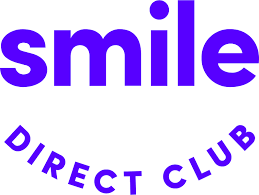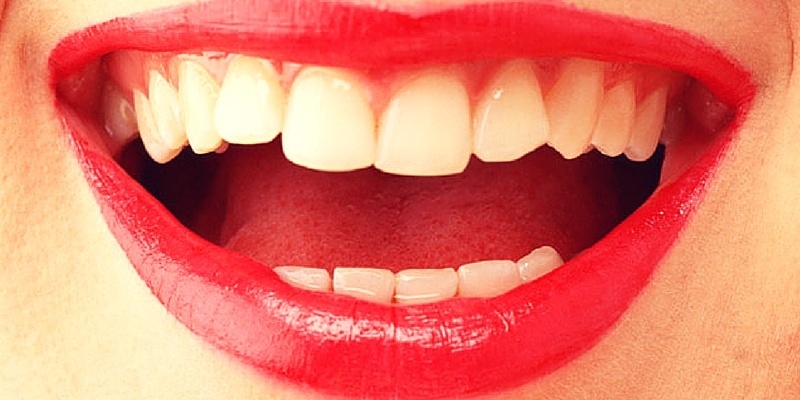In this guide you will learn about clear aligners, or as they’re sometimes called ‘invisible braces’, and why they’re the best method for straightening your teeth, in certain cases.
The benefits are clear. You save yourself the embarrassment of having to wear traditional metal braces while they fix your teeth discreetly without anyone having to know.
This is ideal because crooked teeth are one of the most common insecurities people have regarding their physical appearance.
Despite braces nowadays being more common than ever before, there’s still no shortage of people with underbites, overbites, malocclusion, and other dental problems that need intervention.
That’s not to say aligners are not without disadvantages of their own. In some cases, braces are more suitable for the job. Particularly when it comes to fixing more complicated cases of malocclusion as you’ll soon learn further below.
Why Your Teeth Are Crooked In The First Place
In our post on oral posture, we talked about how bad habits like mouth breathing, and not keeping your mouth closed while sleeping can lead to the development of a face with poor horizontal growth. This results in crowded teeth and a less attractive face.
Which brings us to the point we want to make here: Our dental problems are in no way “natural”. No other mammal in the entire animal kingdom has as many widespread problems with their dental alignment and spacing as humans do. In fact, almost 75% of American adults have some form of malocclusion. Let’s look in the mirror and fix ourselves before we make fun of the British…
Check out that post we linked to above for more information about why the majority of people today are struggling with these kinds of problems.
Invisible Aligners vs Traditional Braces
Both braces and aligners are designed to straighten your teeth and fix misalignment issues over time. They accomplish this by exerting a small, constant pressure on your teeth improving their spacing and positioning. The end result is a better smile.
Oftentimes both also require you to address any preexisting oral hygiene problems such as periodontal disease or gum disease before you can begin treatment. The primary concern is substantial bone loss along your gums which can make either treatment do more harm than good. This is because your teeth will be too loose and in worst case scenarios they can even fall out.
This is particularly a problem for braces because they make keeping up your daily dental routine harder (think the difficulty that comes with flossing) and they can cover cavities which won’t get properly addressed until they’re removed. This isn’t as much of a problem for aligners as you will soon see but you still want to fix these issues.
Here’s a primer on oral hygiene best practices.
Now let’s cover conventional braces and aligners in a variety of categories. For the sake of comparison, we’ll be talking about the Invisalign brand for aligners although there are a number of companies that offer comparable options. We’ll cover them in the next section.
Popularity
Traditional braces have been around much longer than aligners. Their first use dates back to well over over a century ago although these were very primitive forms of what we today call conventional braces. The companies manufacturing transparent aligners have only cropped up within the past 20 years or so.
Overall, conventional braces are more common today although discreet aligners are quickly gaining popularity.
Material
Braces are constructed using porcelain, ceramic, or metal brackets attached to the front (sometimes the back) of your teeth. These brackets are tied together by arch wires and tiny rubber bands.
The best aligners are designed using a smooth BPA-free plastic tray created using a computerized 3-D image of your teeth for a perfect custom fit. Your dentist will take an impression of your teeth to create the mold for the top and bottom pair of aligners which will then be sent to a lab and created using CAD/CAM technology before they get sent back to you.
Color
Traditional braces often come in a classic metallic, silver color but can technically be any color of the rainbow if you so wish (see above). Nowadays, modern orthodontics can even get them to match the enamel of your teeth to blend in more to their natural color making them slightly less noticeable.
As an adult, you likely aren’t making any fashion statements wearing colored braces so transparent aligners, as the name suggests, are the superior choice here and one of their biggest advantages.
Maintenance
Braces can’t come off without the help of an orthodontist. This means they’re on 24/7 constantly applying pressure to realign your teeth. This can be both a good and a bad thing because you won’t need the discipline to keep them on (since they’re irremovable) but you’ll also have a harder time keeping up your daily dental routine as we mentioned earlier because they get in the way. Look into water picks here as they may come in handy as replacements for traditional floss and make it easier.
For the same reason as above, eating certain foods will also become more difficult since they can’t be removed.
Aligners are removable so before eating or drinking or brushing and flossing you can take them out and put them back on when finished. Maintaining oral hygiene becomes much easier for this reason. The important thing to remember is that they usually need to be on at least 20 to 22 hours every day (ideally all 24 hours) in order to realize their benefits. If you keep taking them out for extended periods of time you’re only harming yourself.
You will also need to clean your trays and brush after every meal to avoid staining. Stains will ruin their transparency making it more obvious that you’re wearing them, thus defeating their purpose.
Follow-Up
Follow-up appointments vary depending on your needs. Typically it is every 4 to 8 weeks. For braces, they’ll change and adjust the bands which can take up to an hour.
For aligners you’ll need to replace the trays every 2 weeks. Two weeks is basically the minimum you’ll need to see visible progress. They need to be replaced because your teeth have shifted and in order to apply the appropriate amount of pressure to them the trays have to be adjusted to take account of their new positioning. You’ll also have follow-up appointments with your dentist every 4 to 6 weeks on average (or as often as they deem necessary) just to check on your progress.
IMPORTANT SIDE NOTE: There’s a big difference between Invisalign and other “over-the-counter” teeth aligners like smile direct club or clear connect. These OTC aligners skip the dentist and work directly with you having you take your own impression of your teeth which you then send back to them to create the mold. Since you’re working directly through the company, you often save money and skip the wait but some people consider this a disadvantage because you aren’t working with a professional in person to assess your progress. More on these companies below.
Length of Treatment
Again, the time it takes for the treatment to be completed varies depending on the person and their unique case. For braces 18 to 36 months is the typical amount of time people wear them for.
Treatments for custom aligners, because they tend to fix simpler problems than braces, can take anywhere between 3 to 18 months on average. It all depends on your starting point and how diligent you are keeping them on.
Use Cases
Braces are capable of fixing a wide range of dental problems from simple misalignment to more complicated cases including but not limited to fixing crowded, crooked, or protruding teeth with spacing issues and gaps.
Custom aligners are not for more serious cases. Their best use case is fixing crooked and gapped teeth. They cannot rotate teeth or move them through vertical space as efficiently as braces can. That’s not to say they’re useless or can’t fix overbites, underbites, crossbites, and so on. The only way to know for sure is to speak to a specialized dentist or orthodontist during a consultation.
There are also smile assessments you can take online that are basically short quizzes to figure out whether you’re a candidate and if they’re right for you. You can find these in the next section where we link to some of their official sites.
Some dentists also offer a digital 3-D representation of your teeth showing you exactly how they’ll change position overtime to form your new smile.
Cost
The average cost of clear aligners isn’t that different from braces. Of course it varies depending on your needs (the length of treatment required) and what company you choose to go with (more on them below). Other factors like location (not every dentist charges the same) and insurance coverage also influences the price you’ll pay out of pocket.
In general you can expect to pay between $1800 – $3000 USD for custom-made aligners. Insurance plans often cover a portion, sometimes 50% and sometimes even the whole cost but that depends on your coverage. If you’re paying completely out of pocket you can usually do monthly plans where you pay a smaller amount instead of all up front.
Some brands work directly with consumers and completely skip the doctor’s office allowing them to price more competitively.
- Ex. #1 Candid Co offers a $399 down and $99 / mo. plan for 24 months. That comes out to $2775 after 2 years.
- Ex. #2 Smile Direct Club lets you pay $89 / mo. for 24 months with a $250 deposit which comes out to $2386 OR a one-time payment of $1950.
(Note: These prices were last updated 2/17/2021)
Pros and Cons Summary
Braces Pros:
- Ideal for more complex dental issues.
- No self-discipline required to keep them on.
- Don’t have to clean trays.
Braces Cons:
- Are clearly visible which makes some people self-conscious.
- Makes keeping up your dental hygiene harder with brackets and wires in the way.
- Make certain foods harder to eat.
- Not ideal if you lead an athletic lifestyle or play contact sports.
Aligner Pros:
- They’re invisible. Other people won’t know you’re wearing them.
- You can take them out.
- You can still eat your favorite foods.
- Some companies will ship them directly to your home so no need for a dentist.
Aligner Cons:
- Not suited for more complicated cases.
- You will have to brush your teeth after every meal and keep your trays clean.
Examples of Invisible Aligner Brands
There are a lot of companies that manufactures these types of aligners. Invisalign has patients work with dentists in office. Most of the alternatives work directly with you assuming you’re a candidate.
Here are a few of the more popular ones. Click the image to visit their official site.
Invisalign
- Perhaps the most well-known. Have been around the longest.
- Works through dentists and not with patients directly.
- You can take an online smile assessment as a preliminary test to see if you’re eligible.
- Start the process with an Invisalign certified doctor consultation.
- They will take a patented digital scan of your teeth, map your customized treatment plan, and preview your new smile.
- Your custom aligners are produced and sent to your dentist.
- You work with your doctor all the way through and get to consult with them in person.
Smile Direct Club
- Schedule a 3D scan at one of their “smile shops” OR get an at-home kit sent. A professional licensed in your state will review your plan and guide you remotely through the process.
- Pay $89/mo. with $250 down. No credit checks or forms to fill out OR a 1-time $1950 payment.
- They deliver your aligners and send teeth whitening kits too.
- Offer optional retainer purchase at end of your treatment for $99 to wear at night and ensure your results last.
- A remote dentist checks in every 90 days with you online.
- Each set shipped at once in one box. Don’t have to wait for monthly/biweekly shipments
- Offer 30 day refunds
Candid Co

- $2400 up front or as low as $99/mo.
- $95 modeling kit to take impressions sent to your house
- Assigned an orthodontist who will work with your treatment plan.
- Complete set delivered right to your home at once in a big box.
- Also offer whitening and set of retainers at no extra cost
- Trays are BPA and phthalate free
Snap Correct
- Pay $1749 up front or monthly payments (starting at $80.84/mo. with financing)
- Claim to be the clearest aligners in the industry or “truly invisible” as they call it. Use non-textured trays as opposed to Invisalign which are more opaque
- Take an assessment online, get your impression kit, and upload pics of your teeth to determine eligibility.
- Offer before and after 3-D images of projected results
Clear Correct

- The cost according to their website ranges from $2000-$8000 depending on various factors. You can pay with HSA/FSA (flexible spending accounts).
- Do not work with patients directly. Will need to find a provider to manage your treatment.
- Dentist will take pictures, x-rays, or use a scanner to get an impression of your teeth and submit a prescription to Clear Correct.
- You wear the aligners 22 hours per day at least. Usually 2-3 weeks per set before switching to the next. Will check in with your doctor periodically
- Trays can be seen from close range so not really “invisible”. Similar to other brands.
All logos belong to their respective owners.
Information accurate as of Feb 17 2021.
Conclusion
You will see for yourself how having a better smile with straight teeth changes the various aspects of your life – professionally, socially, and romantically.
Whether you meet face to face with clients and need to present yourself as a professional or you’re trying to look better for potential love interests, straight teeth can and will help you.
Imagine no longer having to feel insecure smiling because you know your teeth look great.
The confidence boost alone is worth it.
With all the tools available to us today, there should be little reason for anyone to suffer with poor teeth. The issue is treatable. Clear color aligners are a good alternative to traditional metal braces and if you have the discipline to follow a treatment plan you will look better at the end of it.









